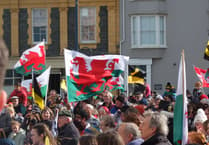The number of people with at least two different passports in Gwynedd has increased in the last decade, new figures show.
A rise in the number of dual citizens across England and Wales is thought to have been driven by migration over the past decade, with more people moving to the UK from the EU. Additionally, many eligible people with UK passports have taken up extra ones after Brexit.
Census 2021 figures show there were around 1,115 UK and non-UK born people in Gwynedd who had multiple passports in 2021 – an increase on 578 people ten years earlier, when the previous census took place.
They accounted for 0.9 per cent of all people in the area – up on 0.5 per cent in 2011.
Across England and Wales, the number rose from 612,000 (1.1 per cent) in 2011 to 1.26 million (2.1 per cent) people who held multiple passports in 2021.
In Gwynedd, there was a substantial increase in those born in the UK who had both Irish and UK passports, with 195 compared to only 29 in 2011.
Overall, this trend was mostly noticed in people aged 50 to 70 years old, which the Office for National Statistics suggested is because many only took up their dual nationality more recently despite moving to England and Wales years ago.
There were also 235 people who held EU and UK passports in Gwynedd in 2021, which was an increase on 74 with both passports a decade ago.
Jay Lindop, from the ONS, said: “This change has been partly driven by migration over the decade, with an increase in people moving here from the EU. As people who have settled in England and Wales go on to have children, we can see an increase in dual citizenship among the younger ages.
“The rise in dual citizens may also suggest greater uptake of additional passports following the end of free movement when the UK left the European Union.”
Those who held a non-UK passport only, which includes EU, non-EU and Irish passports, accounted for 3.5 per cent of all people in Gwynedd, while those who only had a UK passport made up for 73.5 per cent of the population in the area.




